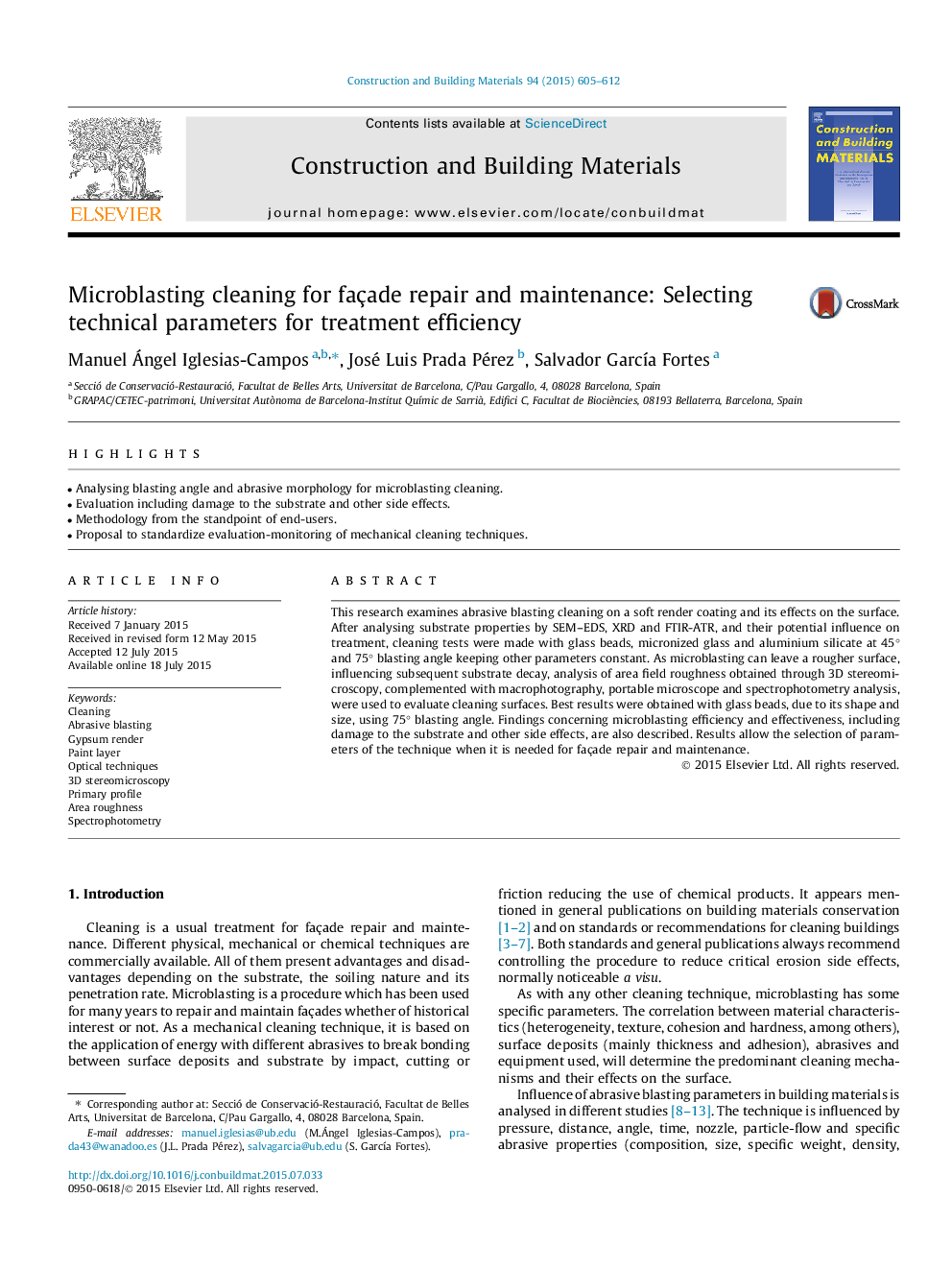| Article ID | Journal | Published Year | Pages | File Type |
|---|---|---|---|---|
| 6720651 | Construction and Building Materials | 2015 | 8 Pages |
Abstract
This research examines abrasive blasting cleaning on a soft render coating and its effects on the surface. After analysing substrate properties by SEM-EDS, XRD and FTIR-ATR, and their potential influence on treatment, cleaning tests were made with glass beads, micronized glass and aluminium silicate at 45° and 75° blasting angle keeping other parameters constant. As microblasting can leave a rougher surface, influencing subsequent substrate decay, analysis of area field roughness obtained through 3D stereomicroscopy, complemented with macrophotography, portable microscope and spectrophotometry analysis, were used to evaluate cleaning surfaces. Best results were obtained with glass beads, due to its shape and size, using 75° blasting angle. Findings concerning microblasting efficiency and effectiveness, including damage to the substrate and other side effects, are also described. Results allow the selection of parameters of the technique when it is needed for façade repair and maintenance.
Related Topics
Physical Sciences and Engineering
Engineering
Civil and Structural Engineering
Authors
Manuel Ángel Iglesias-Campos, José Luis Prada Pérez, Salvador GarcÃa Fortes,
